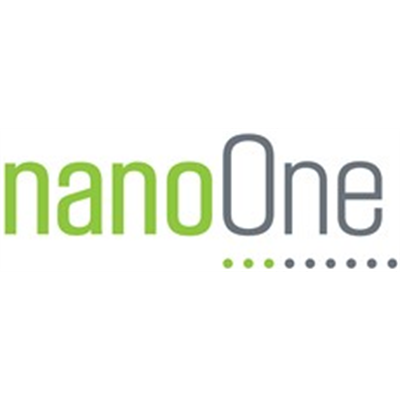Processing Innovations: The Difference Between Winning & Losing

Explore how innovative processing technologies are transforming critical materials production, with six companies leading the charge in sustainable metal extraction methods.
- Novel processing technologies are revolutionizing critical materials production, offering cleaner, more efficient alternatives to traditional methods.
- Companies are commercializing through diverse strategies including licensing, joint ventures, and direct operations, backed by major industry partners.
- Strong government support across U.S., EU, and Australia demonstrates strategic importance of developing sustainable processing capabilities.
- Technologies target key supply chain bottlenecks in battery materials, rare earths, titanium and other critical metals.
- Shift from resource-focused mining to technology-driven processing could fundamentally reshape critical materials production
How Innovative Processing Technologies Are Reshaping Critical Materials Production
The mining and materials processing sector is undergoing a dramatic transformation as companies develop novel technologies to address the twin challenges of environmental sustainability and supply chain security. A new wave of innovative firms is emerging, each bringing proprietary processing methods that promise to revolutionize how we extract and refine critical materials.
This transformation is being led by companies including Lifezone Metals with its emissions-free Hydromet Technology, Nano One's efficient cathode production process, IperionX's breakthrough titanium manufacturing, MTM Critical Metals' innovative Flash Joule Heating, Ionic Rare Earths' integrated recycling approach, and E3 Lithium's direct lithium extraction technology. This article examines these six companies at the forefront of this technological revolution, exploring their unique approaches and paths to commercialization.
The Drive for Sustainable Processing
Traditional mining and materials processing have long been associated with significant environmental impacts, from energy-intensive smelting to chemical-heavy refining processes. However, a growing cohort of technology-focused companies is challenging these conventional methods. Lifezone Metals' Hydromet Technology and Nano One's One-Pot Process represent two distinct approaches to cleaner materials processing, both achieving substantial reductions in energy consumption and emissions.
Lifezone's method eliminates traditional smelting altogether, while Nano One's innovation streamlines cathode production by removing multiple intermediate steps, demonstrating how fundamental process innovation can dramatically improve environmental performance.
Breakthrough Technologies in Metal Processing
The technological innovations being developed by these companies span a wide range of approaches. IperionX's dual-process system, combining HAMR (Hydrogen Assisted Metallothermic Reduction) and HSPT (Hydrogen Sintering and Phase Transformation), represents a comprehensive reimagining of titanium production. Operating at temperatures below 800°C, significantly lower than traditional methods, this approach demonstrates how hydrogen-based processes can transform energy-intensive metal production.
Meanwhile, MTM Critical Metals' Flash Joule Heating technology takes a different approach, using electrothermal processing to extract valuable metals from waste materials and refractory ores. This versatility in handling multiple feedstocks, from electronic waste to mineral concentrates, showcases how innovative processing can address both primary mining and urban mining challenges simultaneously.
Michael Walshe, Managing Director & CEO of MTM Critical Metals, emphasizes the strategic importance of such innovations:
"Innovative processing solutions are key to unlocking value in critical metals. At MTM, we're focused on advancing technologies like Flash Joule Heating to improve efficiency and sustainability in metal recovery. With China dominating metal processing for decades, geopolitical tensions have underscored the need for resilient, domestic supply chains. Our work supports the onshoring of critical metals processing back to the U.S., ensuring greater security and independence in the supply of these essential materials."
Innovations in Lithium & Rare Earth Processing
The critical materials sector is seeing particularly dramatic innovation in lithium and rare earth processing. E3 Lithium's Direct Lithium Extraction (DLE) technology represents a step-change in how lithium is recovered from brine resources, achieving recovery rates above 90% while dramatically reducing water consumption and processing time compared to traditional evaporation methods.
Ionic Rare Earths takes a multi-pronged approach, combining traditional mining of ionic adsorption clay deposits with innovative recycling and processing technologies. Their development of the world's first recycled magnet rare earth oxide production facility in the Western world demonstrates how companies are integrating primary and secondary material sources to create more resilient supply chains.
Commercialization Strategies & Market Entry
These companies exhibit diverse approaches to commercialization, reflecting different market opportunities and technological maturity levels. Nano One has adopted a flexible business model incorporating licensing, joint ventures, and independent production, allowing them to scale their technology through multiple channels simultaneously. Their strategy of establishing demonstration facilities, such as their Candiac pilot plant, provides crucial validation while supporting commercial partnership development.
Lifezone Metals has taken a more vertically integrated approach, applying their Hydromet Technology to both primary mining operations at their Kabanga Nickel Project and recycling applications through their partnership with Glencore. This demonstrates how processing innovations can be leveraged across multiple segments of the value chain.
Strategic Partnerships & Government Support
A common thread among these companies is the crucial role of strategic partnerships and government support in accelerating commercialization. IperionX's collaborations with aerospace and defense entities, combined with their development of a domestic titanium supply chain, align closely with national strategic priorities. Similarly, Ionic Rare Earths' recycling initiatives receive strong support under the EU Critical Raw Materials Act and U.S. policy frameworks, highlighting how government policies are helping drive technology commercialization.
Financial Models & Investment Requirements
The capital requirements and financial strategies of these companies vary significantly based on their technological approach and stage of development. E3 Lithium's DLE technology benefits from the ability to leverage existing oil and gas infrastructure in Alberta, reducing capital requirements. In contrast, Lifezone Metals' integrated approach requires substantial capital investment, offset by strategic partnerships with major mining companies like BHP.
Path to Market & Scale-Up Challenges
Each company faces unique challenges in scaling their technologies to commercial production. Nano One's approach of establishing regional production hubs allows them to demonstrate their technology while building commercial relationships. MTM Critical Metals' three-stage growth plan, progressing from bench-scale testing to full commercialization, illustrates the methodical approach required to scale novel processing technologies.
Environmental & Social Impact
A key differentiator for these companies is their potential to significantly reduce the environmental impact of critical materials production. Lifezone's elimination of sulfur dioxide emissions, Nano One's reduction in water usage, and E3 Lithium's minimal land disturbance demonstrate how innovative processing can address multiple environmental challenges simultaneously. These improvements also translate into social benefits, from reduced local environmental impact to increased in-country value addition.
Future Outlook & Industry Implications
The emergence of these innovative processing technologies signals a fundamental shift in how critical materials will be produced in the future. The ability to process materials more efficiently, with lower environmental impact and greater flexibility in feedstock handling, positions these companies to play crucial roles in the transition to more sustainable material supply chains. Their success could reshape traditional industry dynamics, potentially shifting value creation from large-scale, capital-intensive operations to more distributed, technology-enabled processing facilities.
For Investors
The emergence of innovative processing technologies in the critical materials sector marks a fundamental shift in how these essential materials will be produced. For investors, this transformation presents unique opportunities that differ significantly from traditional mining investments. Rather than being primarily exposed to commodity price fluctuations, these companies' values are driven by technology development, commercial validation, and successful scaling of their proprietary processes.
Several key factors make this sector particularly compelling:
- The strong alignment between these technologies and global sustainability goals, with demonstrable improvements in environmental performance across water usage, emissions, and land disturbance.
- Significant governmental and strategic support, reflecting the growing recognition of critical materials processing as a matter of national security and industrial policy.
- Multiple paths to value creation through various business models, from direct operations to technology licensing, allowing companies to adapt their approach based on market conditions and technological maturity.
However, investors should carefully evaluate each company's stage of development, strength of intellectual property protection, and clarity of commercialization strategy. While companies like Lifezone Metals and Nano One offer nearer-term validation through established partnerships and pilot facilities, earlier-stage companies such as MTM Critical Metals present different risk-reward profiles as they work to scale their technologies.
The success of these companies could fundamentally reshape the critical materials supply chain, potentially shifting value creation from traditional resource extraction to technology-enabled processing solutions. This transformation, combined with strong ESG alignment and crucial positioning in the clean energy transition, suggests significant potential for long-term value creation in this emerging sector.
Company Summaries
Lifezone Metals (NYSE: LZM)
- Core Technology: Revolutionary Hydromet process that eliminates traditional smelting, representing a fundamental shift in nickel and PGM processing with significantly reduced environmental impact
- Strategic Position: Flagship Kabanga Nickel Project in Tanzania demonstrates commercial viability, strengthened by BHP's substantial $100M investment
- Key Differentiators: Enables in-country processing, creating operational efficiencies while aligning with local development goals
- Commercial Progress: Strategic expansion into PGM recycling through Glencore partnership validates technology's versatility
- Institutional Support: Backed by BlackRock, with additional validation from U.S. DFC and JOGMEC, demonstrating strong institutional confidence
Nano One Materials (TSX: NANO)
- Core Innovation: One-Pot Process and M2CAM® technologies revolutionize cathode production, delivering 30% cost reductions and 50-80% emissions cuts
- Strategic Asset: Operates the sole full-scale LFP plant outside China, providing crucial Western supply chain independence
- Commercial Validation: Secured partnerships with industry leaders including Rio Tinto, Sumitomo, and Volkswagen
- Government Support: Received significant backing through $18M Québec investment and $12.9M U.S. DoD grant
- Market Position: Well-positioned to capture growing demand for sustainable battery materials in North American market
IperionX (NASDAQ: IPX)
- Technological Edge: HAMR and HSPT technologies represent breakthrough approaches in titanium production
- Infrastructure Development: Establishing comprehensive U.S. titanium supply chain through Virginia Manufacturing Campus
- Resource Security: Integration of Titan Project in Tennessee ensures domestic supply control
- Commercial Traction: Strategic relationships with Lockheed Martin, Ford, and U.S. Navy demonstrate market demand
- National Importance: Strong government support underscores strategic significance of domestic titanium capability
MTM Critical Metals (ASX: MTM)
- Innovative Technology: Flash Joule Heating process offers transformative approach to metal recovery and recycling
- Versatile Application: Technology processes multiple feedstocks, addressing crucial recycling challenges
- Strategic Partnership: Alignment with Indium Corporation provides important market validation
- Development Progress: Advancing Texas demonstration plant with strong financial position
- Market Opportunity: Well-positioned for growing demand in critical metals recycling sector
Ionic Rare Earths (ASX: IXR)
- Integrated Approach: Combines Makuutu Project mining operations with innovative recycling capabilities
- First-Mover Advantage: Belfast plant represents pioneering Western facility for recycled rare earth oxide production
- Geographic Expansion: Strategic Brazilian joint venture extends operational reach
- Policy Alignment: Strong positioning with EU and U.S. initiatives supporting rare earth recycling
- Project Economics: Attractive financial metrics with US$502M NPV and 43.6% IRR demonstrate value potential
E3 Lithium (TSXV: ETL)
- Technology Leadership: Direct Lithium Extraction achieves superior recovery rates with reduced environmental impact
- Strategic Assets: Leverages existing Alberta infrastructure to accelerate North America's largest lithium resource
- Development Stage: Operational pilot plant with clear pathway to commercial production
- Market Position: Key player in developing North American lithium supply chain independence
- Timeline: Targeted commercial production by 2026-2027 aligns with growing market demand
Each of these companies represent different approaches to revolutionizing critical materials processing, each addressing specific challenges in the global supply chain. Their combination of innovative technologies, strong partnerships, and clear commercialization strategies positions them at the forefront of the industry's transformation toward more sustainable and efficient production methods.
Analyst's Notes




Subscribe to Our Channel
Stay Informed



































